- Home
- Tom Clancy
Battle Ready Page 39
Battle Ready Read online
Page 39
With these thoughts in mind, I decided to build on ACRI by adding an annual brigade-sized exercise with African and U.S. forces. The exercise, called “Natural Fire,” was designed to bring together regional forces in a realistic peacekeeping and humanitarian operations task that they would work in conjunction with NGOs and international relief organizations. I further combined into this our medical, dental, and veterinarian training, in order to gain the goodwill these provided in the African villages in the exercise area.
Then we needed a third element at the strategic, policy level. That is, we needed to bring in senior political officials, senior NGOs, and senior military to talk about how to make the big operational strategic decisions, and bring the different elements into cooperation on the ground. This was supposed to be the function of Emerald Express.
Once these elements were in place, I hoped to broaden the program into a model for all Africa, and tie it in with the newly formed (and U.S. DOD-sponsored) African Center for Strategic Studies (ACSS)79 to further develop policy issues and reinforce Emerald Express. The truly superb director of the ACSS, Nancy Walker, enthusiastically and skillfully supported our efforts.
Among the attendees at Emerald Express for whom I had special hopes were General Tsadkan of Ethiopia and General Shebat of Eritrea, the heads of the militaries in their countries. These two old friends (and friends of mine) had fought and won the two-decade “Long Struggle” against the oppressive Menguistu regime in Ethiopia; and both had wonderful tales of their rough days in the bush during the guerrilla war.
I was keenly interested in helping their two militaries, and saw a further opportunity to stabilize their portion of the troubled Horn of Africa if I could persuade them to sign on to our proposed cooperative regional initiative. But neither showed much interest in that. I figured they were still consumed with their internal issues after emerging from twenty-plus years of warfare and devastation.
A few months later, their two countries staggered into a tragic war; and the two old friends became enemies.
The one nation that took to my plan was Kenya. General Tonje, the strong and impressive leader of Kenya’s military, had instituted deep reforms that had transformed that organization into a noncorrupt and professional force. At the conference, he and President Moi proposed that we run the program through the East African Community (EAC), a regional political organization that included Kenya, Uganda, and Tanzania. This was a good idea, but unfortunately unworkable, since Uganda and Tanzania were not in CENTCOM’s AOR. When I asked if they could be assigned to us, EUCOM objected. And when we then tried to run the program jointly with EUCOM, it only barely got off the ground. . . . Those parts of the program that were run in Kenya through the EAC were very successful.
Meanwhile, confusion had crept in about the directions and goals of Emerald Express.
Pacific Command and the Marine Corps (for various legitimate reasons) were claiming part ownership of the conference, while providing very little in the way of funds to support it—most of which were coming from CENTCOM. Their idea was to shift the focus of the conference to their own particular areas of interest. Though I didn’t object to their participation, I was not happy to see the shift away from the areas where CENTCOM had concerns.
I therefore decided to make changes to Emerald Express that would reorient it into a solely CENTCOM affair, focused on Africa, and held somewhere in our African region. I MEF agreed to keep sponsorship and run the conference, which was renamed “Golden Spear.” It provided a high-level, intergovernmental forum for discussions on planning and lessons-learned development for several types of engagement missions. Kenya agreed to cohost the first Golden Spear conference.
WHEN I returned from Emerald Express, I learned that the CENTCOM AOR had grown. We’d been assigned the Central Asian region that included the countries of Kazakhstan, Uzbekistan, Kyrgyzstan, Tajikistan, and Turkmenistan. We soon began taking on new challenges presented by this assignment.
LATER IN APRIL, Senator Ted Stevens led a seven-senator congressional delegation (CODEL) to the Gulf to look at gaining more burden-sharing support from Persian Gulf nations, particularly Saudi Arabia, for our ongoing military enforcement of sanctions against Iraq.
I picked up the CODEL in my plane (an ancient Boeing 707) and took them to Jeddah, Saudi Arabia, where we met the Saudi Minister of Defense, Prince Sultan, and the Saudi ambassador to the U.S., Prince Bandar. Since I was certain that the CODEL was unaware of the support we were actually receiving from the Saudis, I prefaced the meeting with a briefing that covered the hundreds of millions of dollars of direct support we received each year in fuel, food, water, etc., as well as the additional hundreds of millions the Saudis had spent to build a state-of-the-art housing facility for our forces. We also received indirect support from Saudi purchases of U.S. defense equipment. And, finally, Saudi Arabia and other Gulf nations had provided troops and funding support for our missions in places like Somalia. This information (obviously unexpected) satisfied the CODEL; the Minister of Defense followed this up with a show of personal support and friendship for CENTCOM.
EARLY MAY. In response to an Indian nuclear weapons test, Pakistan was scheduled to test their own nuclear weapon, an act that would drastically escalate tensions in the region—and the world.
In an effort to persuade the Pakistanis not to test, the State Department planned to send Deputy Secretary of State Strobe Talbot and the Assistant Secretary for the region, Rick Inderfer, to meet Prime Minister Sharif and the senior Pakistani leadership. I was to accompany them.
The mission was not going to be easy. Relations between the U.S. and Pakistan were already tense. The Pakistanis had backed our efforts in Afghanistan during the Afghan rebellion against the Soviets; there were now a large number of refugees—and a state of chaos—on their western border as a result; and we had (in their view) dumped them.
Their bitterness had increased when we imposed sanctions over their WMD program. Specifically, we had refused to deliver F-16s they had bought and paid for, or even to return their money; and then we’d deducted storage fees for the planes from what they had paid. No surprise: They were enraged. (The anger was compounded after many pilots flying older planes were lost, which wouldn’t have happened if they’d had the F-16s.)
Our treatment of Pakistan was working against our interest. This was a state on the edge; the government was shaky and badly corrupt; and politically powerful Islamists inflamed the population. If Pakistan failed, or turned into an Iranian- or Afghan-style theocracy, we would have major problems in the region . . . and beyond. We did not want nuclear-armed Islamist radicals. Then or now.
The delegation flew to Tampa to join me on the twenty-two-hour flight to Islamabad. As we prepared to board the CENTCOM 707, word came that the Pakistani government had decided not to approve the visit. This triggered a flurry of diplomatic calls from the waiting room at our air base . . . made more urgent by the approach of our drop-dead takeoff time. If we didn’t get in the air within two hours, our crew time would run out.
When the calls kept getting negative results, I decided to propose to Secretary Talbot a back-channel approach. If I called General Jehangir Karamat, the chief of staff of the Pakistan military, I thought he would okay the trip. Karamat was a man of great honor and integrity, and a friend. Relations with Pakistan hung on the thin thread of a personal relationship that General Karamat and I agreed to maintain.
“Go ahead,” the Secretary told me, though his face was skeptical.
But when I called General Karamat, he promised to take care of the problem; and a few minutes later we were in the air . . . further proof, if the Secretary needed it, that the relationship between our two militaries remained strong, in spite of the strained relationships elsewhere. Though Washington had severely limited the military-to-military connections I could make, I had insisted on maintaining that personal connection to General Karamat.
In Pakistan, we met several times with Prime Minister Sharif
and his ministers, but were unable to convince them not to test. The domestic pressure to respond to the Indian tests was too great.
As we left, I had a few private moments with General Karamat, who shared with me his frustration with his corrupt government. Pakistan’s military leaders had more than once seized power from the elected government. Though others in the military had urged him to follow that tradition, he assured me he could never do that. He kept his word; but that did not stop a military coup later that year.
IN MID-MAY, shooting incidents in Badime, a disputed border area between Ethiopia and Eritrea, had caused the Eritreans to attack in force and seize the area. The Ethiopians were mobilizing for a counterattack.
On the eighteenth, I called General Tsadkan, to get his take on the situation. According to my Ethiopian friend, his old friend General Shebat had been visiting him to celebrate the belated graduation of his wife from college (after leaving college decades before to join the political struggle, she had finally returned to complete her degree). According to Tsadkan, Shebat had abruptly walked out of the celebration; and the attack had come the next day. It was a stab in the back. He was predictably outraged.
Needless to say, when I called General Shebat on the twentieth, he gave me a different version of these events. He claimed the attack had come in response to a series of violent incidents staged by the Ethiopians.
Wherever the truth lay, it was tragic that these two old friends, who had suffered so much side by side, couldn’t work out this quarrel peacefully.
As tensions worsened, Susan Rice, the State Department’s Assistant Secretary for African Affairs, asked me to intervene; and she and I worked together to try calm everybody down . . . but with no success. Over the next months, the crisis grew to critical mass and exploded. All we could do in response was plan a precautionary Non-combatant Evacuation Operation.
HAPPILY, many of our relationships in the region were actually improving—some after years of conflict. One of the more notable turnarounds came from Yemen. After years of civil war had devastated the country, the nation was now united. But a stupid decision to support Iraq during the Gulf War had soured relations with the U.S. Earlier that year, however, Yemen’s president, Ali Abdullah Saleh, had sent word that he was looking to mend fences and begin a cooperative military-to-military relationship with the U.S. This was good news. Yemen was a strategically vital country in serious danger of becoming a failed state. Helping Yemen was critical to our security interests in the region.
I visited Yemen on May 22, spending several days with President Saleh and his ministers. Because he had no ability to control his borders and coast, or to effectively act against the terrorist groups who freely transited the country and used it as a base, Saleh desperately needed help in training his counterterrorist forces. And of course, he desperately needed a Coast Guard.
I added several other Security Assistance programs to his wish list, as well as an intelligence-sharing program.
Again, these actions brought forth little support from Washington. I was nevertheless determined to build this relationship. It was in the region’s, and our own, security interests.
While I was in Yemen, I toured the port of Aden, where new construction and refueling sites were being examined by our naval component as a potential replacement for the refueling stop at Djibouti, where there were significant security problems. I liked what I saw. The refueling site was away from any piers; the actual refueling could be accomplished out in the harbor at a secure distance from sea traffic; and initial reports from the DOD experts about fuel quality and quantity were encouraging.
IN JULY, we received two notable visitors at CENTCOM headquarters—Prince Abdullah of Jordan and General Altynbayev, the Kazakhstan Minister of Defense.
A bright, vibrant young leader with innovative ideas, Abdullah was at that time the head of the Jordanian Special Forces. Inevitably, our conversation turned to the failing health of his father, King Hussein, who had long been fighting cancer. The cancer was worsening; it was clear the king would soon be dead.
For many years, Hussein’s brother had been designated as next in line to the throne; but that was soon to change. Though the king was about to change his pick to Abdullah, the prince had had no indication of that. It was a splendid choice. He has proved to be one of the most enlightened leaders in his part of the world.
General Altynbayev was the first Central Asian official I had met since the five former Soviet states were assigned to the CENTCOM AOR. As he and I talked, I quickly realized that these states were going to pose very different problems from the other subregions of our AOR—problems that were more related to their former rule by Moscow than to their religion or ethnicity (though these issues were also very much present). I looked forward to a visit to the Stans later that year.
AT THE END of July, on another trip to Pakistan, I visited some of the more remote and rugged parts of the country—the Line of Control Area of Kashmir and the nearby Siachen glacier, and the fabled Khyber Pass on the western border with Afghanistan. In these wild mountains, Pakistani and Indian troops had faced off against each other for decades at altitudes in excess of twenty thousand feet. If the fighting didn’t kill you, the weather and altitude did. To my surprise, the two countries had, for the most part, succeeded in containing the fighting to this dangerous and volatile, yet well-defined, area. But that “happy” situation was going to change in a matter of months.
At the Khyber Pass, I gained a greater understanding of Pakistan’s rugged western border with Afghanistan-remote hostile tribes, a territory not fully subject to Pakistani law or control, and a truly tough mountainous terrain. By then, I had a solid sense of how the ruinous rule of the Taliban was destroying that country and the sanctuary they provided extremists like Al Qaeda presented a growing and exceptionally dangerous threat.
WE LEARNED how serious it was on the seventh of August, when our embassies in Kenya and Tanzania were hit by suicide truck bombs. Twelve Americans (including three members of our CENTCOM Security Assistance team) and 234 locals were killed in the attacks, and over 5,000 were wounded. The attacks were conducted by Osama bin Laden’s Al Qaeda terrorist group.
We immediately sent a Fleet Antiterrorist Support Team (FAST), from the Marines, Navy engineer units, and medical units to meet the emergency needs; and I dispatched a team to Nairobi from our headquarters to function as a Joint Task Force Command Element to determine what else was needed. All of this became “Operation Resolute Response.”
The attack did not come as a total surprise. We had already learned from President Moi several months earlier that Muslim extremists were operating in his country and in neighboring Somalia, and that terrorist activities were becoming a grave threat to East, Central, and West Africa.
In February, acting on a request from our ambassador in Kenya, Prudence Bushnell, I had sent a message to the Secretary of State warning of the vulnerability of the Nairobi embassy to car bomb attacks (it was located on one of Nairobi’s busiest thoroughfares) and offering to help with a security assessment and recommendations. The State Department reply essentially told me that my help was not needed—the same message the ambassador had got when she’d tried to catch Washington’s attention before coming to me.
When a reporter somehow dug up the basic contents of the message, there was a small crisis in Washington; but, to my amazement, the State Department just blew it off, and the issue died.
This was just as well. We had a much larger question to answer: What to do about Osama bin Laden and Al Qaeda? In those days, we knew that they were a growing threat, but we did not know how dangerous they would become. Yet on the evidence of Nairobi and Dar es Salaam, “dangerous” might be too mild a word. Clearly, we had to counterattack. But that was not going to be easy. Al Qaeda has never been a “place” that we could easily target; it’s a network, a web. And Osama has always been elusive. We did know that Al Qaeda had facilities in Afghanistan; and our intelligence agencies knew Osama wa
s then located somewhere near these facilities; but there was no way we could locate his day-to-day position.
By mid-August, additional intelligence suggested that bin Laden might be visiting one of his terrorist training camps in Afghanistan. I was ordered to prepare Tomahawk missile strikes on the camp and on a target in Khartoum, Sudan. (According to our intelligence, this was a pharmaceutical plant that produced a precursor used to develop toxic chemical agents for terrorist organizations.) The strikes were scheduled for August 20.
The Sudan target was new to me; I had not yet seen them mentioned in our intel assessments, but the evidence of its terrorist use seemed highly reliable.
The training camps were rough-and-ready facilities that did not offer high-value targets in terms of infrastructure, and the odds of getting bin Laden were not good, but in my mind it was worth the shot. If he was there, and we hit him, great. If he wasn’t, then at least he’d know we could reach him. I knew it was a long shot and that if he wasn’t there we would be criticized, but I felt we had to take the shot.
The day we fired the missiles, I cleared my desk of everything but a card of thanks from the parents of Sergeant Sherry Olds, a remarkable NCO who had been killed in the Nairobi attack, for a letter I’d sent them and for our honor guard at her funeral.
This strike was called “Operation Infinite Reach.”
It did not actually do much damage, and we did receive a lot of press and political criticism for it, but in my mind it was worth doing. Intelligence came down with several other targets after these strikes, but, again, they never had the specificity or reliability that I felt warranted launching missile strikes or special operations missions. The risks to our forces or the assured collateral damage were not justified by the sketchy intel we saw in the strikes executed.

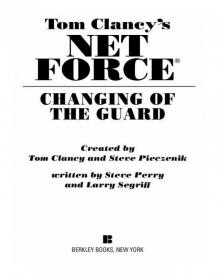 Changing of the Guard
Changing of the Guard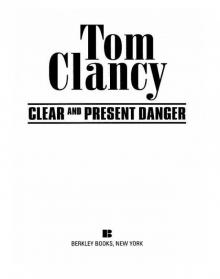 Clear and Present Danger
Clear and Present Danger Hounds of Rome
Hounds of Rome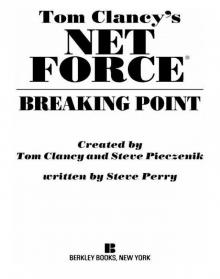 Breaking Point
Breaking Point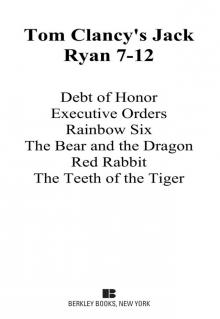 Tom Clancy's Jack Ryan Books 7-12
Tom Clancy's Jack Ryan Books 7-12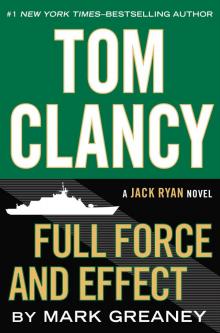 Full Force and Effect
Full Force and Effect The Archimedes Effect
The Archimedes Effect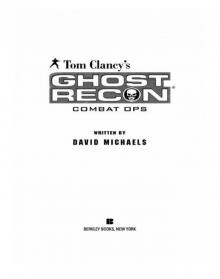 Combat Ops
Combat Ops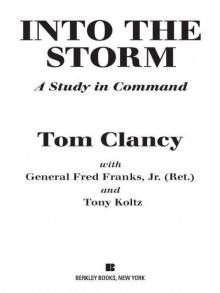 Into the Storm: On the Ground in Iraq
Into the Storm: On the Ground in Iraq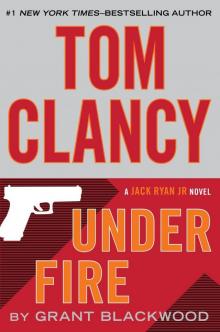 Under Fire
Under Fire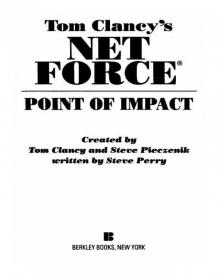 Point of Impact
Point of Impact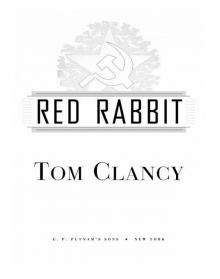 Red Rabbit
Red Rabbit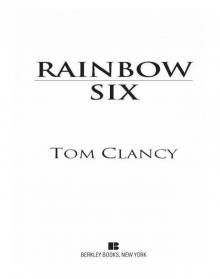 Rainbow Six
Rainbow Six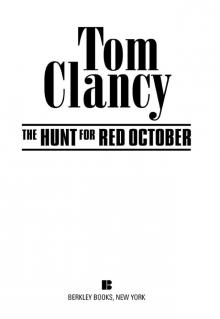 The Hunt for Red October
The Hunt for Red October The Teeth of the Tiger
The Teeth of the Tiger Conviction (2009)
Conviction (2009)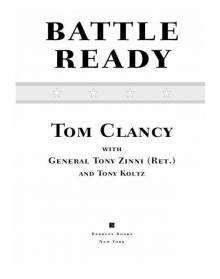 Battle Ready
Battle Ready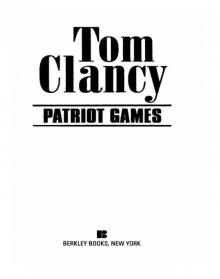 Patriot Games
Patriot Games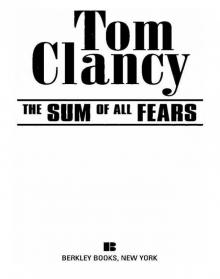 The Sum of All Fears
The Sum of All Fears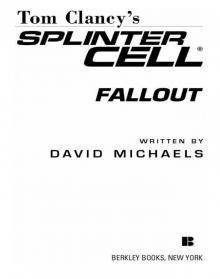 Fallout (2007)
Fallout (2007)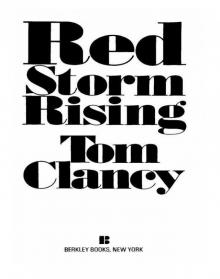 Red Storm Rising
Red Storm Rising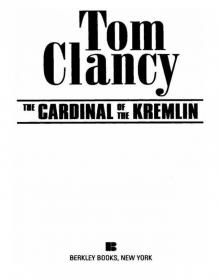 The Cardinal of the Kremlin
The Cardinal of the Kremlin Executive Orders
Executive Orders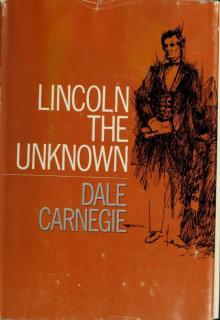 Lincoln, the unknown
Lincoln, the unknown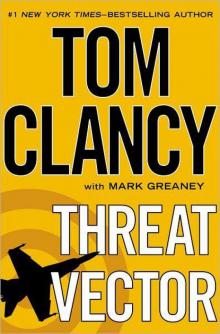 Threat Vector
Threat Vector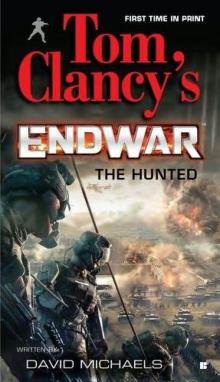 The Hunted
The Hunted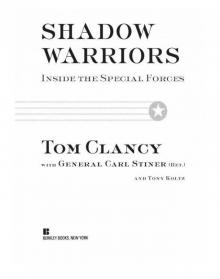 Shadow Warriors: Inside the Special Forces
Shadow Warriors: Inside the Special Forces End Game
End Game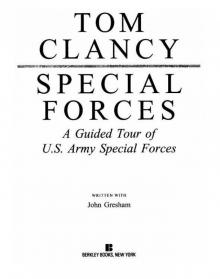 Special Forces: A Guided Tour of U.S. Army Special Forces
Special Forces: A Guided Tour of U.S. Army Special Forces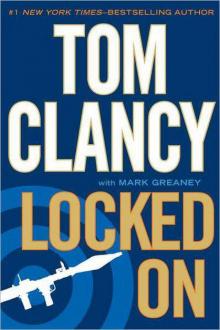 Locked On
Locked On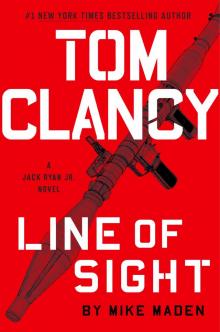 Line of Sight
Line of Sight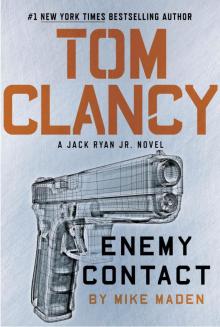 Tom Clancy Enemy Contact - Mike Maden
Tom Clancy Enemy Contact - Mike Maden Fighter Wing: A Guided Tour of an Air Force Combat Wing
Fighter Wing: A Guided Tour of an Air Force Combat Wing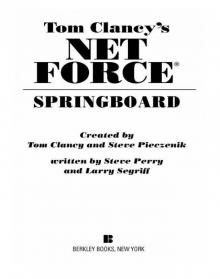 Springboard
Springboard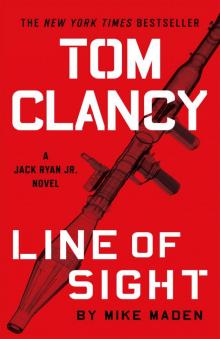 Line of Sight - Mike Maden
Line of Sight - Mike Maden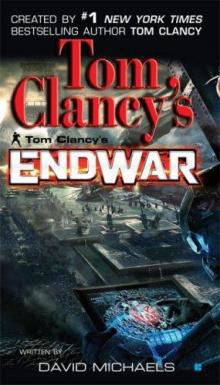 EndWar
EndWar Dead or Alive
Dead or Alive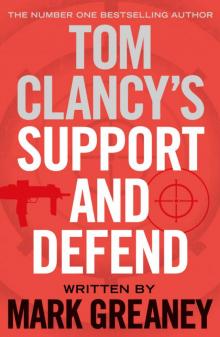 Tom Clancy Support and Defend
Tom Clancy Support and Defend Checkmate
Checkmate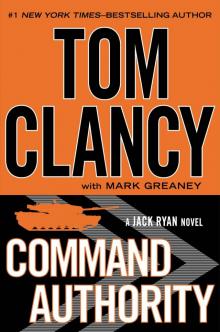 Command Authority
Command Authority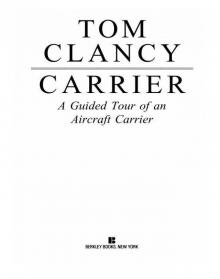 Carrier: A Guided Tour of an Aircraft Carrier
Carrier: A Guided Tour of an Aircraft Carrier Blacklist Aftermath
Blacklist Aftermath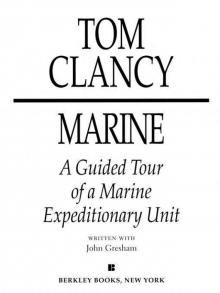 Marine: A Guided Tour of a Marine Expeditionary Unit
Marine: A Guided Tour of a Marine Expeditionary Unit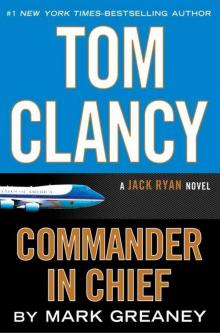 Commander-In-Chief
Commander-In-Chief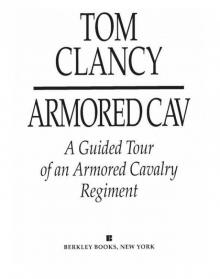 Armored Cav: A Guided Tour of an Armored Cavalry Regiment
Armored Cav: A Guided Tour of an Armored Cavalry Regiment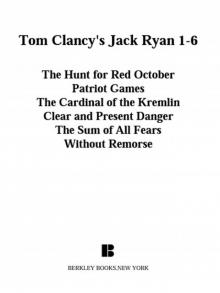 Tom Clancy's Jack Ryan Books 1-6
Tom Clancy's Jack Ryan Books 1-6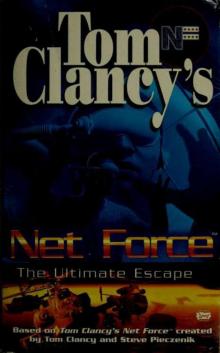 The Ultimate Escape
The Ultimate Escape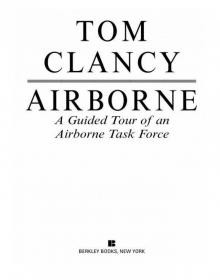 Airborne: A Guided Tour of an Airborne Task Force
Airborne: A Guided Tour of an Airborne Task Force Debt of Honor
Debt of Honor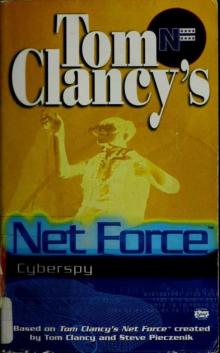 Cyberspy
Cyberspy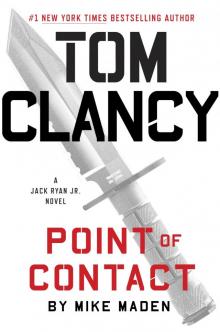 Point of Contact
Point of Contact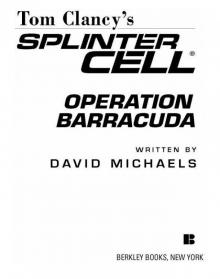 Operation Barracuda (2005)
Operation Barracuda (2005)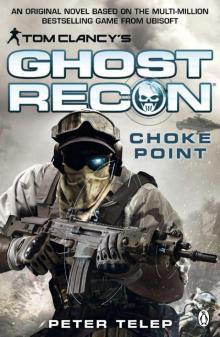 Choke Point
Choke Point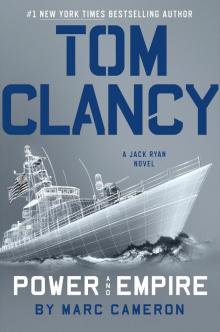 Power and Empire
Power and Empire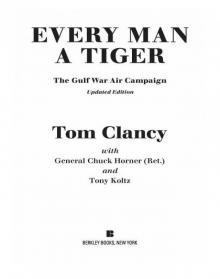 Every Man a Tiger: The Gulf War Air Campaign
Every Man a Tiger: The Gulf War Air Campaign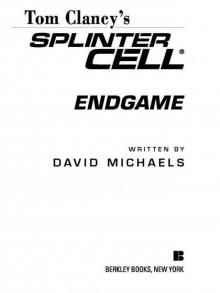 Endgame (1998)
Endgame (1998)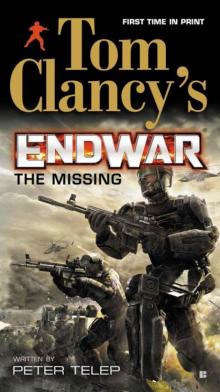 EndWar: The Missing
EndWar: The Missing Splinter Cell (2004)
Splinter Cell (2004)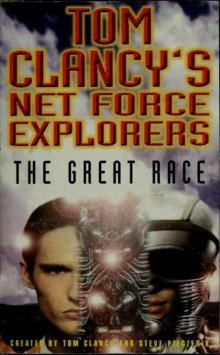 The Great Race
The Great Race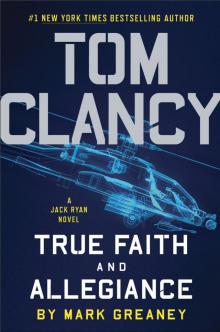 True Faith and Allegiance
True Faith and Allegiance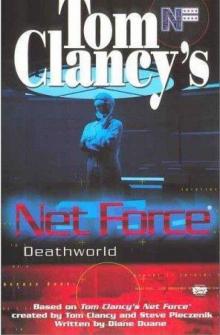 Deathworld
Deathworld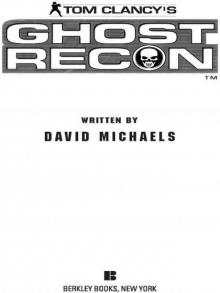 Ghost Recon (2008)
Ghost Recon (2008)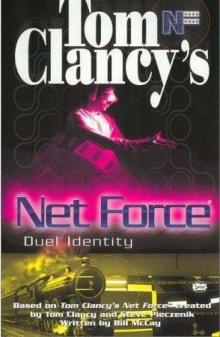 Duel Identity
Duel Identity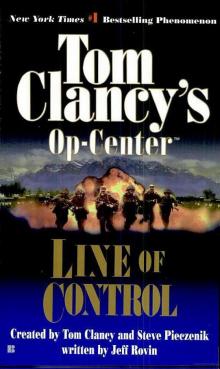 Line of Control o-8
Line of Control o-8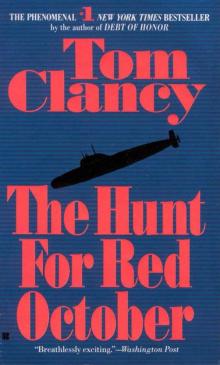 The Hunt for Red October jr-3
The Hunt for Red October jr-3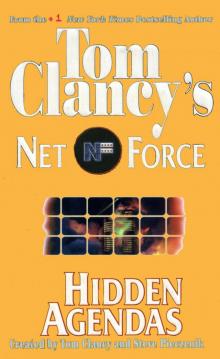 Hidden Agendas nf-2
Hidden Agendas nf-2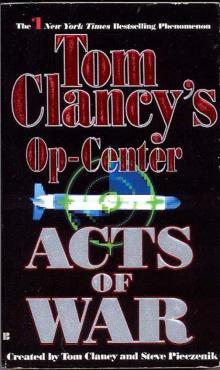 Acts of War oc-4
Acts of War oc-4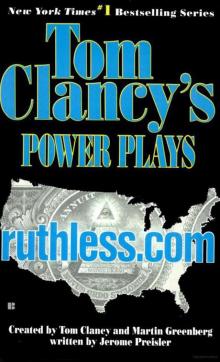 Ruthless.Com pp-2
Ruthless.Com pp-2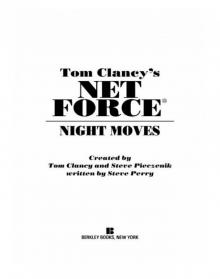 Night Moves
Night Moves The Hounds of Rome - Mystery of a Fugitive Priest
The Hounds of Rome - Mystery of a Fugitive Priest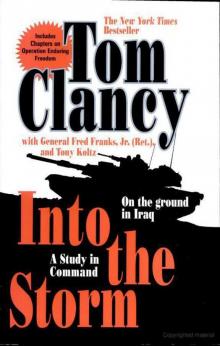 Into the Storm: On the Ground in Iraq sic-1
Into the Storm: On the Ground in Iraq sic-1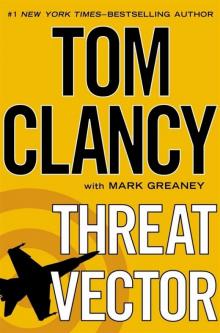 Threat Vector jrj-4
Threat Vector jrj-4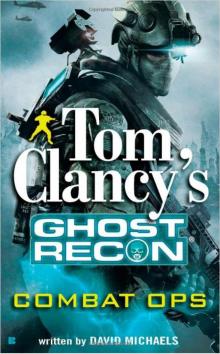 Combat Ops gr-2
Combat Ops gr-2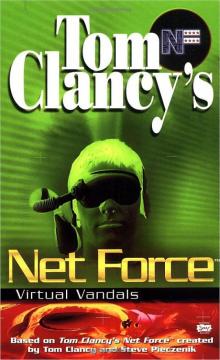 Virtual Vandals nfe-1
Virtual Vandals nfe-1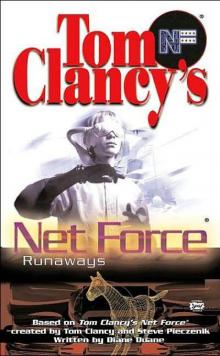 Runaways nfe-16
Runaways nfe-16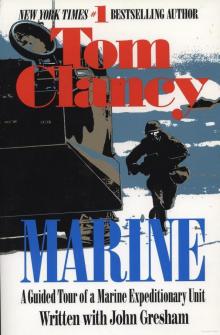 Marine: A Guided Tour of a Marine Expeditionary Unit tcml-4
Marine: A Guided Tour of a Marine Expeditionary Unit tcml-4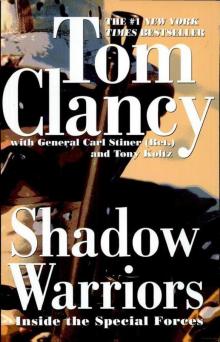 Shadow Warriors: Inside the Special Forces sic-3
Shadow Warriors: Inside the Special Forces sic-3 Jack Ryan Books 1-6
Jack Ryan Books 1-6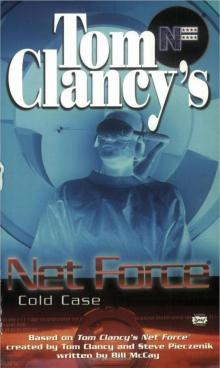 Cold Case nfe-15
Cold Case nfe-15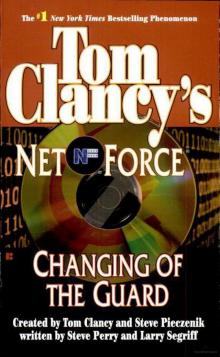 Changing of the Guard nf-8
Changing of the Guard nf-8 Splinter Cell sc-1
Splinter Cell sc-1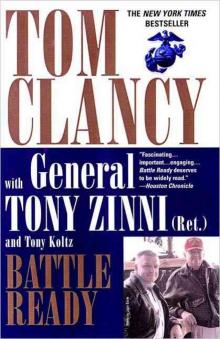 Battle Ready sic-4
Battle Ready sic-4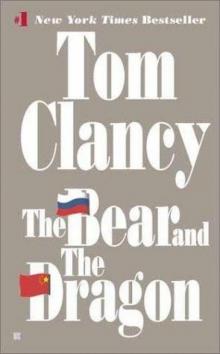 The Bear and the Dragon jrao-11
The Bear and the Dragon jrao-11 Fighter Wing: A Guided Tour of an Air Force Combat Wing tcml-3
Fighter Wing: A Guided Tour of an Air Force Combat Wing tcml-3 Patriot Games jr-1
Patriot Games jr-1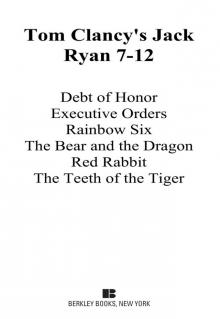 Jack Ryan Books 7-12
Jack Ryan Books 7-12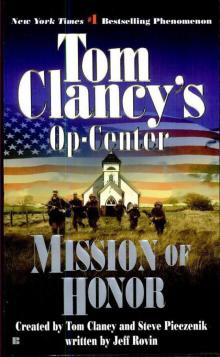 Mission of Honor o-9
Mission of Honor o-9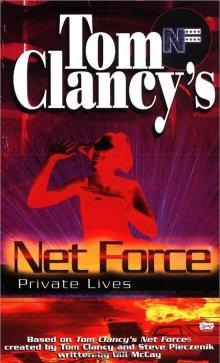 Private Lives nfe-9
Private Lives nfe-9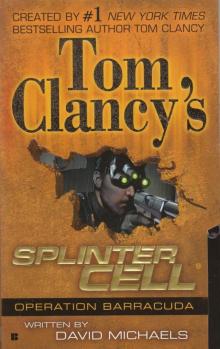 Operation Barracuda sc-2
Operation Barracuda sc-2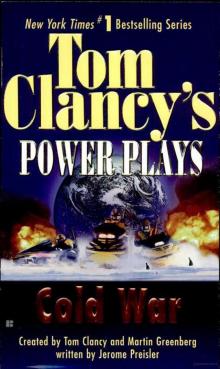 Cold War pp-5
Cold War pp-5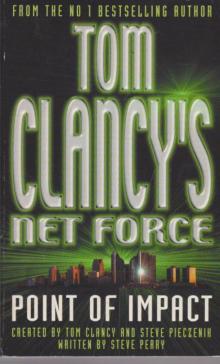 Point of Impact nf-5
Point of Impact nf-5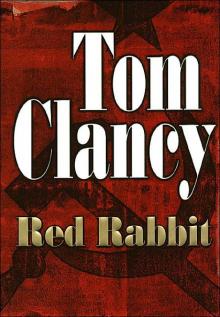 Red Rabbit jr-9
Red Rabbit jr-9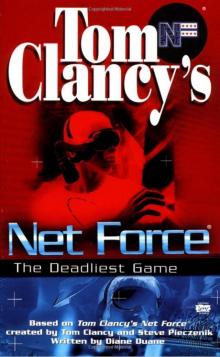 The Deadliest Game nfe-2
The Deadliest Game nfe-2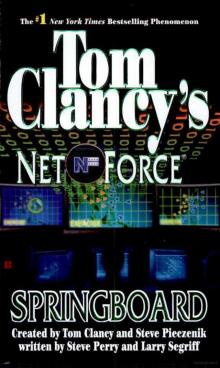 Springboard nf-9
Springboard nf-9 Safe House nfe-10
Safe House nfe-10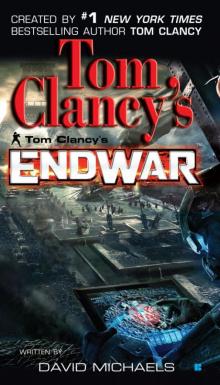 EndWar e-1
EndWar e-1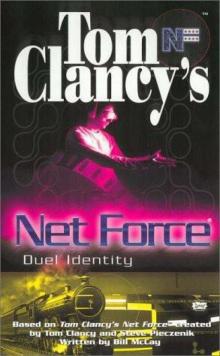 Duel Identity nfe-12
Duel Identity nfe-12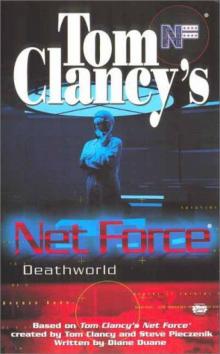 Deathworld nfe-13
Deathworld nfe-13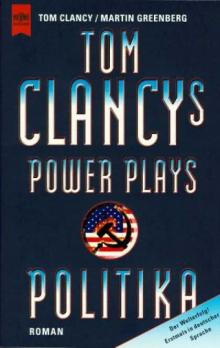 Politika pp-1
Politika pp-1 Rainbow Six jr-9
Rainbow Six jr-9 Tom Clancy's Power Plays 1 - 4
Tom Clancy's Power Plays 1 - 4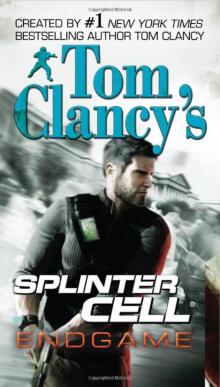 Endgame sc-6
Endgame sc-6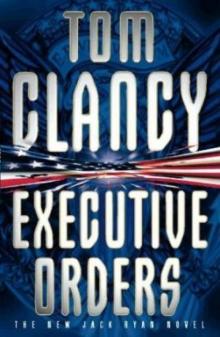 Executive Orders jr-7
Executive Orders jr-7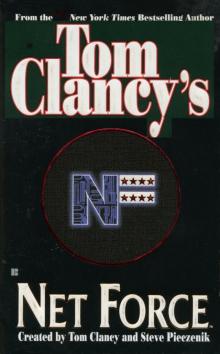 Net Force nf-1
Net Force nf-1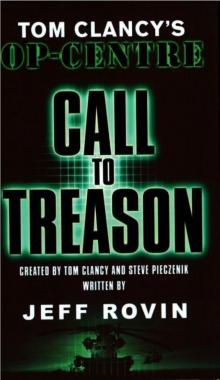 Call to Treason o-11
Call to Treason o-11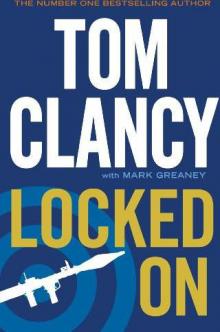 Locked On jrj-3
Locked On jrj-3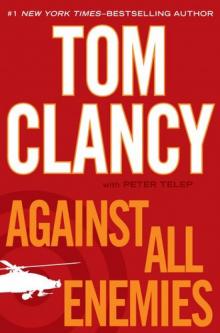 Against All Enemies
Against All Enemies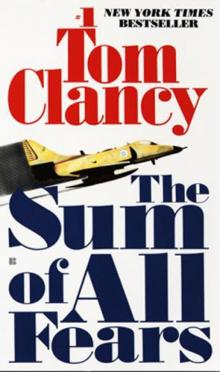 The Sum of All Fears jr-7
The Sum of All Fears jr-7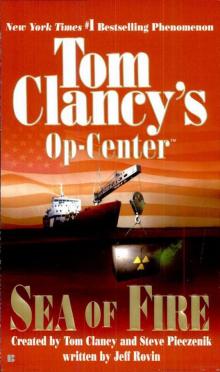 Sea of Fire o-10
Sea of Fire o-10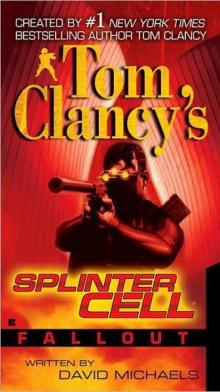 Fallout sc-4
Fallout sc-4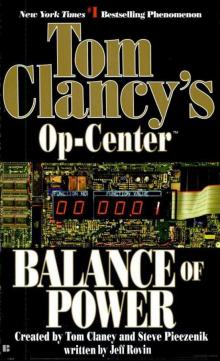 Balance of Power o-5
Balance of Power o-5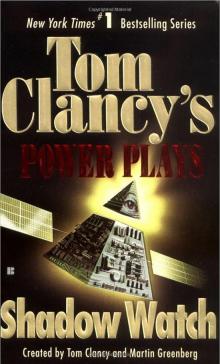 Shadow Watch pp-3
Shadow Watch pp-3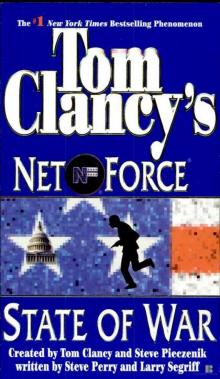 State of War nf-7
State of War nf-7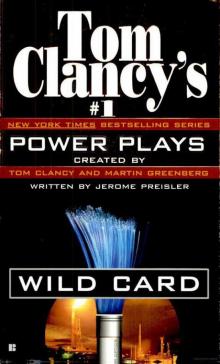 Wild Card pp-8
Wild Card pp-8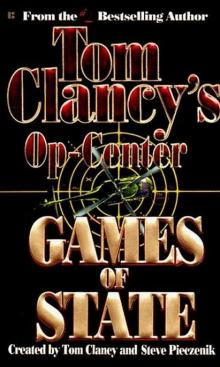 Games of State o-3
Games of State o-3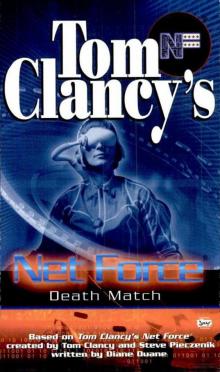 Death Match nfe-18
Death Match nfe-18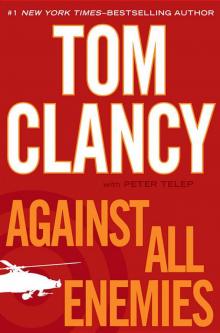 Against All Enemies mm-1
Against All Enemies mm-1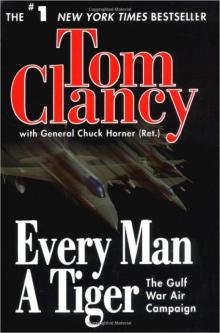 Every Man a Tiger: The Gulf War Air Campaign sic-2
Every Man a Tiger: The Gulf War Air Campaign sic-2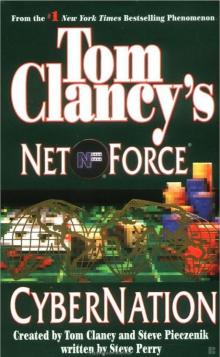 Cybernation nf-6
Cybernation nf-6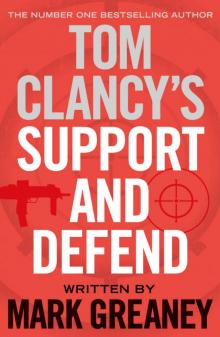 Support and Defend
Support and Defend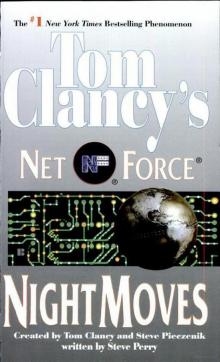 Night Moves nf-3
Night Moves nf-3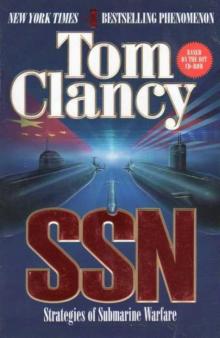 SSN
SSN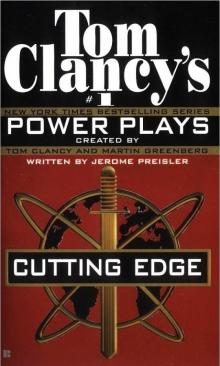 Cutting Edge pp-6
Cutting Edge pp-6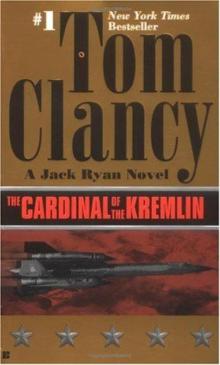 The Cardinal of the Kremlin jrao-5
The Cardinal of the Kremlin jrao-5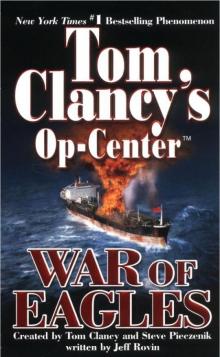 War of Eagles o-12
War of Eagles o-12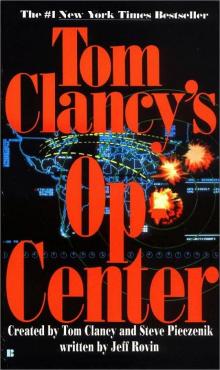 Op-Center o-1
Op-Center o-1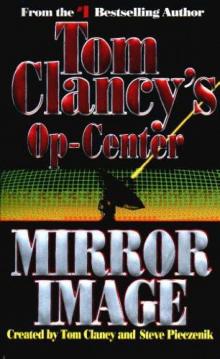 Mirror Image o-2
Mirror Image o-2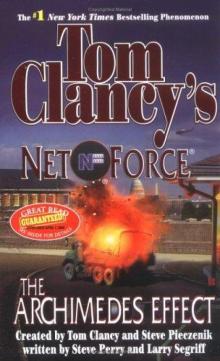 The Archimedes Effect nf-10
The Archimedes Effect nf-10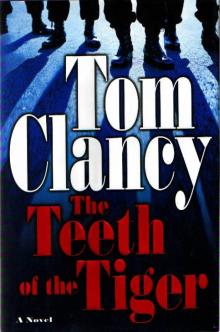 Teeth of the Tiger jrj-1
Teeth of the Tiger jrj-1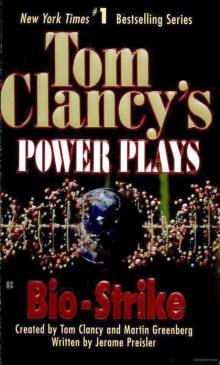 Bio-Strike pp-4
Bio-Strike pp-4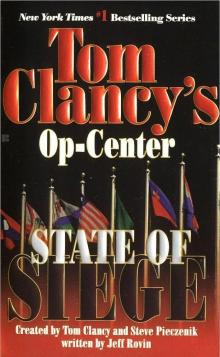 State of Siege o-6
State of Siege o-6 Debt of Honor jr-6
Debt of Honor jr-6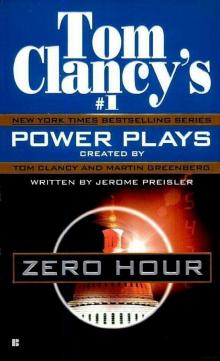 Zero Hour pp-7
Zero Hour pp-7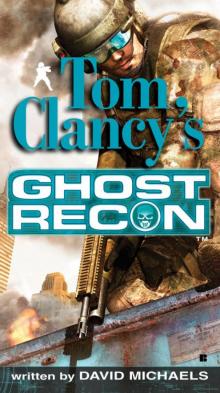 Ghost Recon gr-1
Ghost Recon gr-1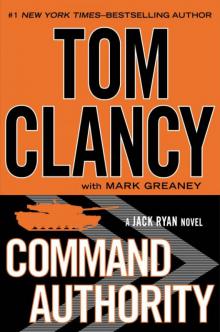 Command Authority jr-10
Command Authority jr-10 Tom Clancy's Power Plays 5 - 8
Tom Clancy's Power Plays 5 - 8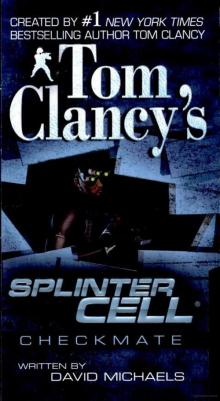 Checkmate sc-3
Checkmate sc-3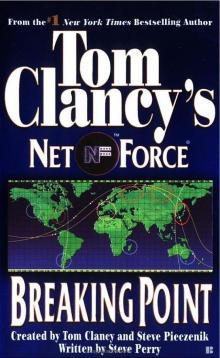 Breaking Point nf-4
Breaking Point nf-4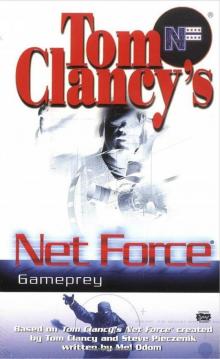 Gameprey nfe-11
Gameprey nfe-11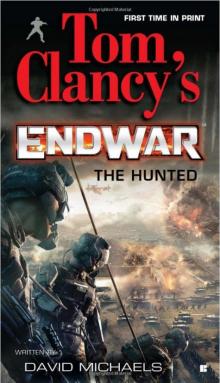 The Hunted e-2
The Hunted e-2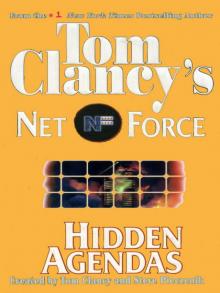 Hidden Agendas
Hidden Agendas Divide and Conquer o-7
Divide and Conquer o-7